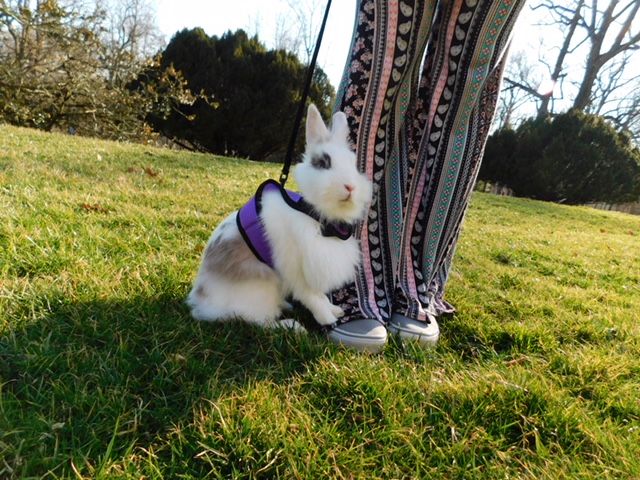Have you ever had an anxiety attack? A hands-shaking, cannot catch-your-breath, blackout feeling that you can’t seem to control?
According to a study by the National Institute of Mental Health, about one in five adults in the United States experience some degree of mental illness.
Dr. Melissa Terlecki is the chair and an associate professor of psychology at Cabrini University.
“Anxiety ramps is the sympathetic nervous system arousing the body so you can have an increased heart rate, sweating, heavy breathing,” Terlecki said. “There is a physiological response, but there is also a mental response where when you’re over anxious, you have a hard time concentrating or focusing, you might blank out, which is a natural response.”
A study in BMC Psychiatry reported that emotional support animals provide “benefits to those with mental health conditions.” Emotionally, pets provide an unconditional love to their owner, as they depend on them for basic needs. Practically, pets require a routine treatment and require the attention of their owner.
Emily Kreiswirth, freshman social work major, has experienced anxiety since she was a child.

“My first anxiety attack was when I was in third grade, and as I got older, around middle school, they got to the point where my mom would have to pick me up from school,” Kreiswirth said.
Throughout her life, Kreiswirth tried different techniques to curb her anxiety. Therapy, stress relief toys and walks were common solutions to calm her down.
“My anxiety worsened as I got to college so what I was doing was going across campus to see my friend, who’s a senior, and petting her dog when I was having an anxiety attack,” Kreiswirth said. “Petting the dog helped me so much.”
In December 2017, Kreiswirth rescued a lionhead rabbit, named Runt, and that lives in her dorm as an emotional support animal.
“Runt depends on me, so I can’t sit in my bed anxiety ridden,” Kreiswirth said. “She keeps me on my toes; she keeps me busy.”
There is a difference between emotional support animals and service animals. According to the Americans with Disabilities Act, a service animal is defined as “a dog that has been individually trained to do work or perform tasks for an individual with a disability. The task performed by the dog must be directly related to the person’s disability.”
Emotional support animals are not considered service animals under the ADA. The United States Department of Justice documents that emotional support animals “provide comfort just by being with a person.”
On the Cabrini University campus, service and emotional support animals are allowed after an extensive process. Cabrini requires completed forms from therapists, as well as a visa in the Disability Resource Center for mental health accommodations.
“I really do love it here, so I didn’t understand why I was having so much anxiety when I got here. I didn’t have an outlet for my anxiety, but once I got Runt, everything changed,” Kreiswirth said. “This semester has become so much easier, but I also have the responsibility of taking care of her and that keeps me on track.”
Oxytocin, also called the love hormone, is released in the brain when engaging with people we love. This hormone is present in a woman during lactation, creating the bond between mother and baby. Oxytocin is also released when hugging or kissing a partner. According to Psychology Today, oxytocin is a countermeasure to depressive feelings.
Takefumi Kikusui, an animal behaviorist in Japan, conducted a study examining oxytocin levels in pet owners after looking into their pet’s eyes. The study found that both male and female dogs experienced a 130 percent rise in oxytocin levels, and both male and female owners experienced a 300 percent increase after 30 minutes of interacting with their pet.

Alexis Douglass, junior early education major, rescued Harper, a shepherd mix, in November, 2016.
“Originally, I was diagnosed with general anxiety disorder, major depressive disorder and ADHD. When I was going through treatments, I’m not a medication kind of person, so I wanted to find another way to help myself without having to be on a ton of medications,” Douglass said.
Having a dog on campus has changed Douglass’s routine, making her be present and attentive for the animal she cares for.
“Before having a dog on campus, I went out constantly. I left all my homework until the last minute, I was always spending money, but I was also very depressed,” Douglass said. “When I got Harper, my mood flipped instantly. A dog is something that just naturally calms me down. I really appreciate her and all the support she’s given me.“
“Animals hold this non-judgmental companionship. It’s unquestionable loyalty. You have this relationship, and you’re taking care of something and that love is reciprocated,” Terlecki said. “They’re always there for you.”



